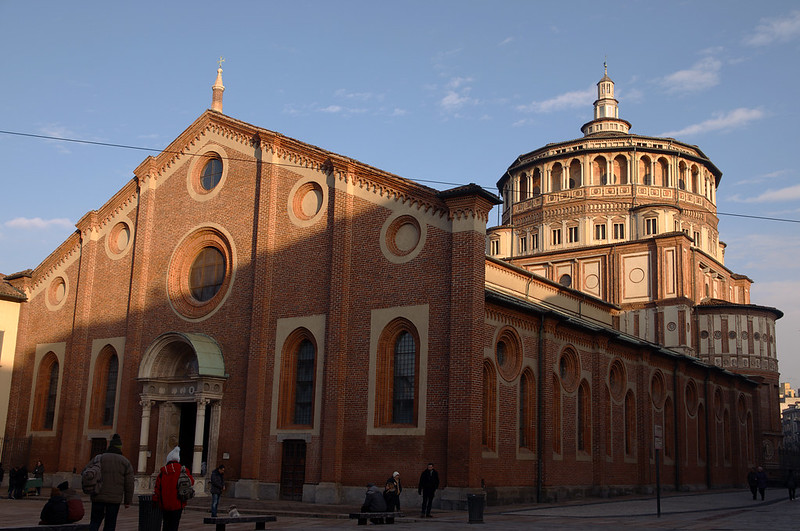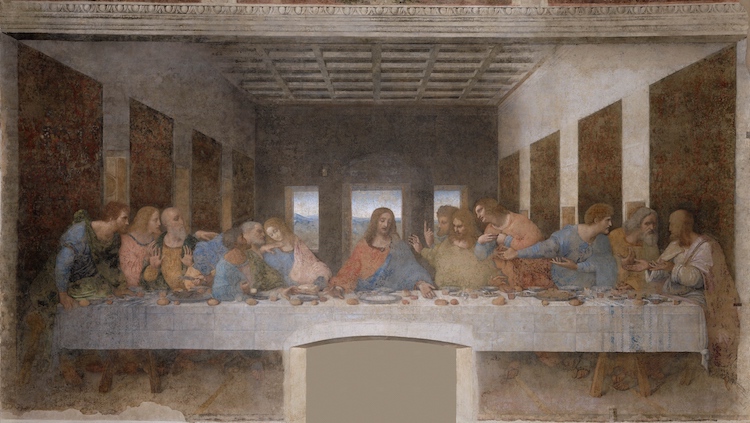
Leonardo da Vinci, “The Last Supper,” 1498 (Photo: Haltadefinizione via Wikimedia Commons, Public domain)
This post may contain affiliate links. If you make a purchase, My Modern Met may earn an affiliate commission. Please read our disclosure for more info.
Leonardo da Vinci produced an unprecedented amount of work during the Italian Renaissance. Among his famously eclectic—and seemingly endless—portfolio, there are three creations that stand out from the rest: the Mona Lisa (a painted portrait), the Vitruvian Man (a scientific drawing), and The Last Supper (a biblical fresco).
Since its completion at the end of the 15th century, The Last Supper has captivated audiences. Its impressively large scale, unique composition, and mysterious subject matter have made it one of the most famous Renaissance paintings. Here, we take a closer look at this fresco, exploring its history and unpacking the characteristics that have come to define it.
Commissioning the Painting
In 1495, Leonardo da Vinci was commissioned by Ludovico Sforza—the Duke of Milan and a longtime patron of the artist—to paint a 15 by 29-foot mural for the Dominican convent of Santa Maria delle Grazie in Milan as a part of a renovation project.
Specifically, Sforza asked Leonardo to depict Jesus’ final meal as described in the Gospel of John in the New Testament of the bible. Like other depictions of this well-known event, Leonardo presented Jesus and his 12 apostles at a table celebrating Passover, a traditional Jewish holiday. Unlike similar works, however, Leonardo opted to illustrate the moment Jesus tells his followers that one of them will betray him, placing much of the painting’s focus on the figures’ individual expressive reactions.
“Leonardo imagined, and has succeeded in expressing, the desire that has entered the minds of the apostles to know who is betraying their Master,” writer and historian Georgio Vasari wrote in the Lives of the Artists. “So in the face of each one may be seen love, fear, indignation, or grief at not being able to understand the meaning of Christ; and this excites no less astonishment than the obstinate hatred and treachery to be seen in Judas.”
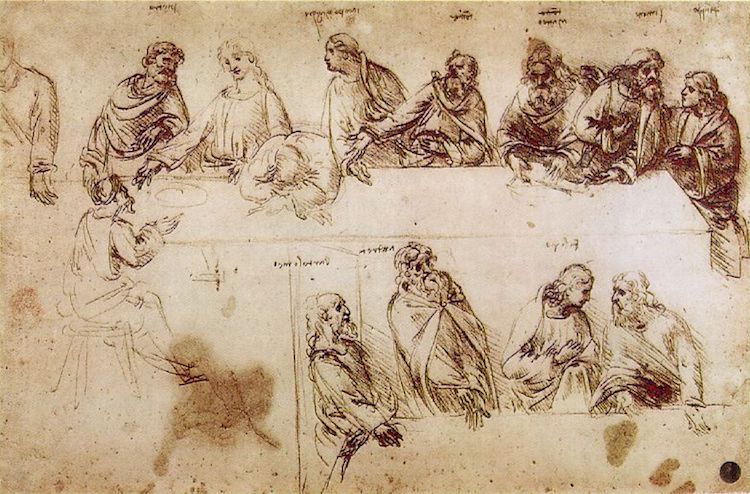
A study for “The Last Supper” from Leonardo’s notebooks, ca. 1495-1497 (Photo: the Artchive via Wikimedia Commons, Public domain)
Composition of The Last Supper
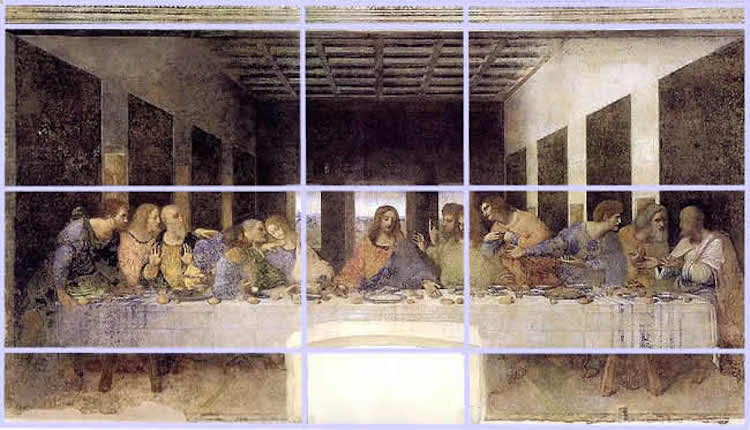
Leonardo da Vinci, “The Last Supper” with golden section, 1498 (Photo: Wikimedia Commons, Public domain, PD-Art)
There are 13 figures in the painting, including Jesus. Leonardo balanced all of these individuals by employing perspective. Jesus is the vanishing point where all of the lines in the painting converge. Not only does this give the composition depth, but it also highlights the importance of Jesus in the narrative.
Additionally, Leonardo made sure that all of the apostles were organized in a symmetrical way. A group of six flanks Jesus on either side, creating balance at the long, dining table.
Who’s in the painting?
Leonardo organized the apostles into groups of three, a number representative of the holy trinity.

In the first group, Bartholomew (1) , James (2), and Andrew (3) look surprised.
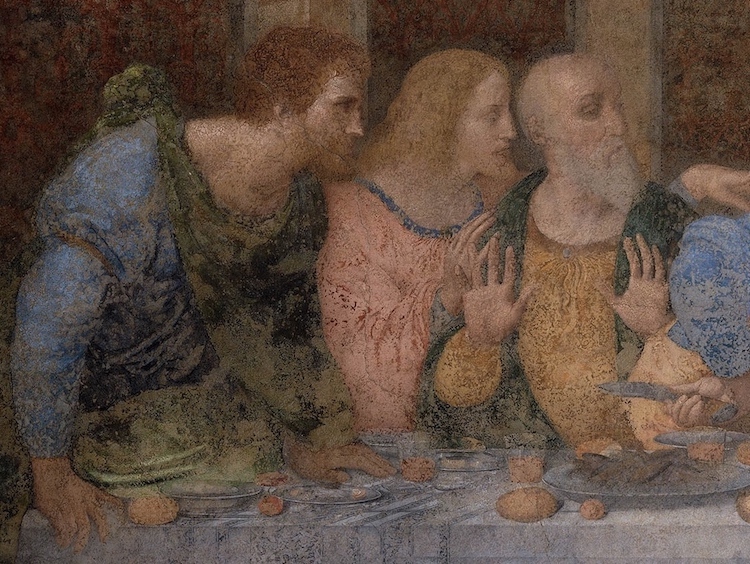
In the second group, Peter (5) appears angry, John (6) looks away in despair, and Judas (4)—the apostle in question—appears shocked that Jesus (7) has discovered his plan.
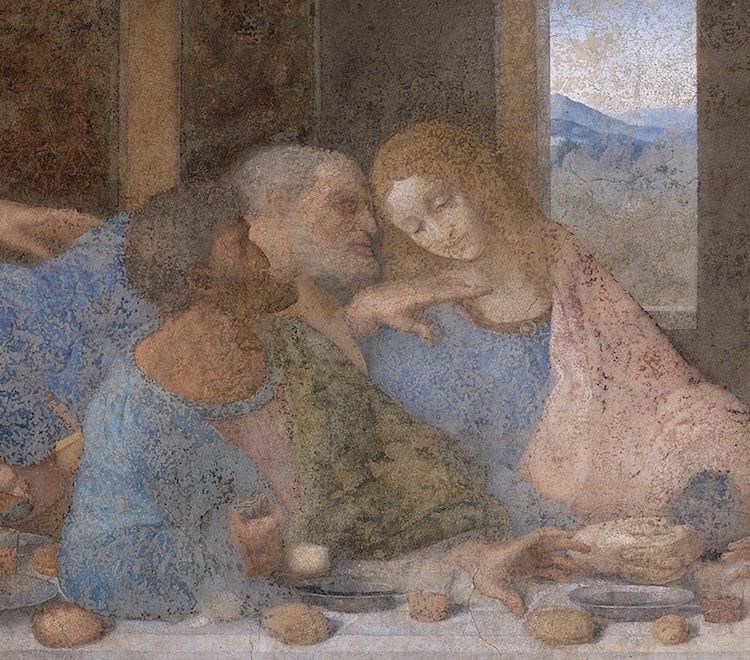
The next group features Thomas (8), James the Greater (9), and Philip (10), who look at their teacher in disbelief.
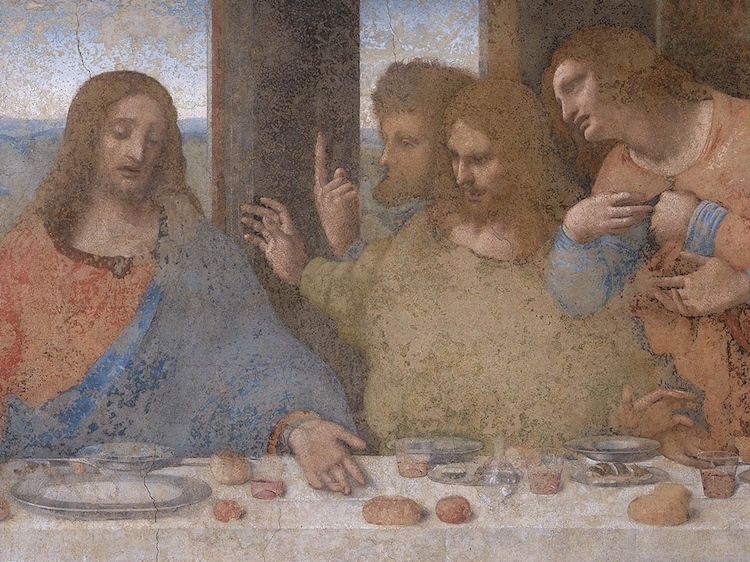
Finally, Matthew (11), Jude (12), and Simon (13) consult each other to try to make sense of Jesus’ startling news.
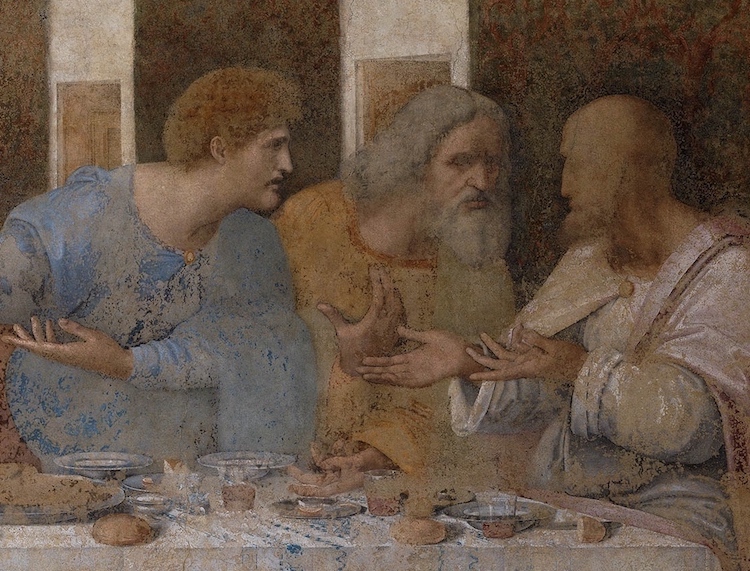
Technique
To create The Last Supper, Leonardo forewent the traditional buon, or “true,” fresco technique of painting on wet plaster in favor of the secco, or “dry,” method.
Known for his procrastination habit and his ambitious to-do list, Leonardo appreciated the fact that working on dry plaster allowed him to take his time and not worry about the material drying out. Using this method, he was able to add ample detail and employ his signature painting techniques, including bold shadow contrasts (chiarscuro), hazy shading (sfumato), and the use of one-point linear perspective.

“The Last Supper” in 1975 (Photo via Wikimedia Commons Public Domain)
Unfortunately, however, secco frescoes are notoriously delicate, and The Last Supper has substantially deteriorated since its completion in 1498. Because of this, it has been restored on numerous occasions, culminating in a painting that likely features very few of the artist’s original brushstrokes.
Legacy
In popular culture, Leonardo’s The Last Supper is particularly well-known for the speculation that surrounds it. In The Templar Revelation, authors Lynn Picknett and Clive Prince claim that the figure believed to be John is actually Mary Magdalene, a woman featured in the gospels. This theory is famously further explored in The Da Vinci Code by Dan Brown.
Additionally, Italian musician Giovanni Maria Pala believes he has discovered hidden musical notes in the composition. When played, they produce a piece that Pala says “sounds like a requiem.”
In the context of art history, The Last Supper is regarded as one of the most important masterpieces of all time. In addition to its balanced composition and advanced perspective, it is celebrated for the naturalism of its figures and the way, according to Leonardo himself, that “the spectator may easily recognize, by means of their attitudes, the purpose in their minds.”
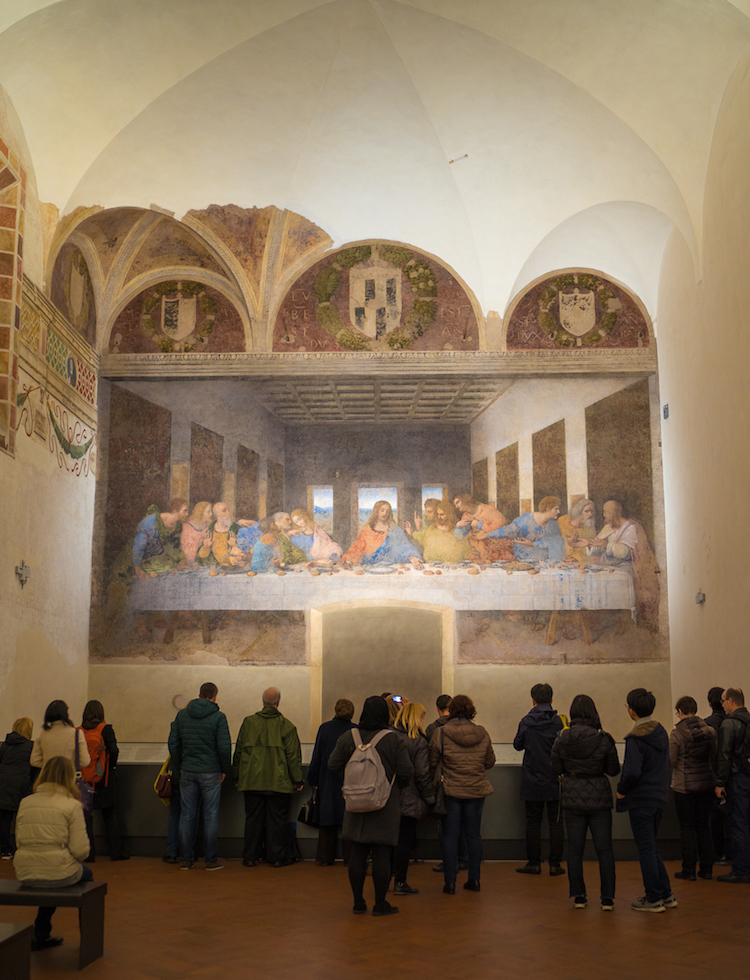
“The Last Supper” in the refectory of the Convent of Santa Maria delle Grazie (Photo: Stock Photos from HUANG Zheng/Shutterstock)
This article has been edited and updated.
Related Articles:
8 Renaissance Artists Whose Work Transformed the Art World
Exploring the Major Contributions of the Lesser-Known ‘Northern Renaissance’
New Leonardo da Vinci Drawing Is Discovered And It’s Worth $16 Million
The Story Behind Renoir’s Impressionist Masterpiece ‘Luncheon of the Boating Party’

